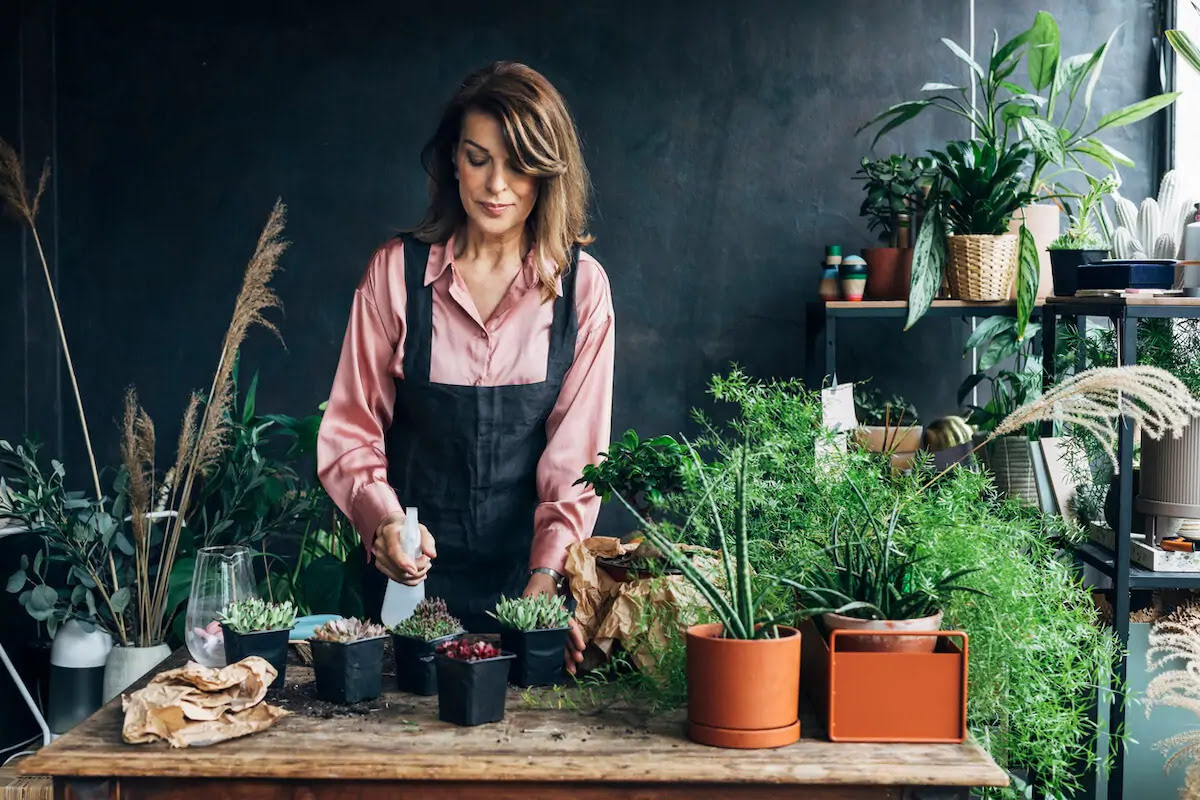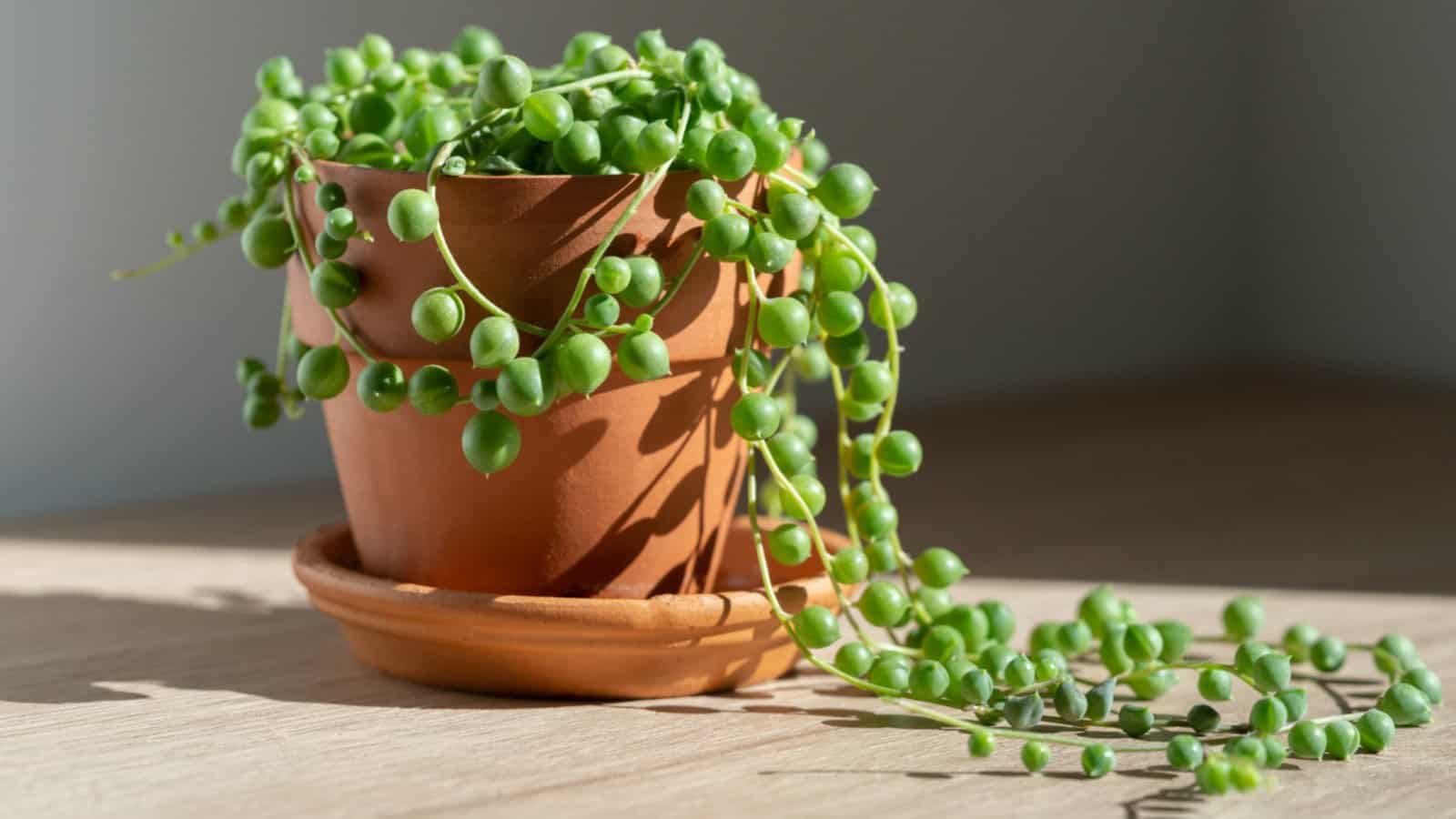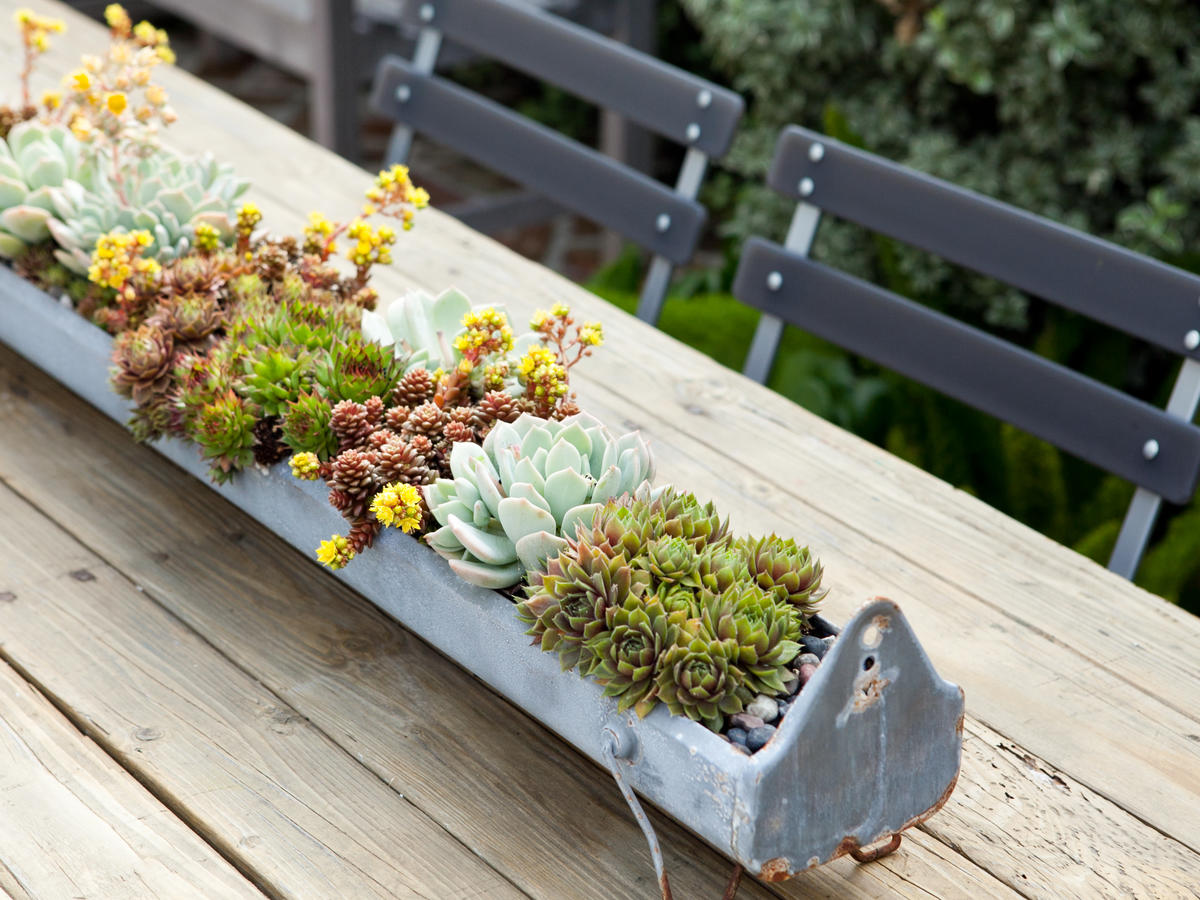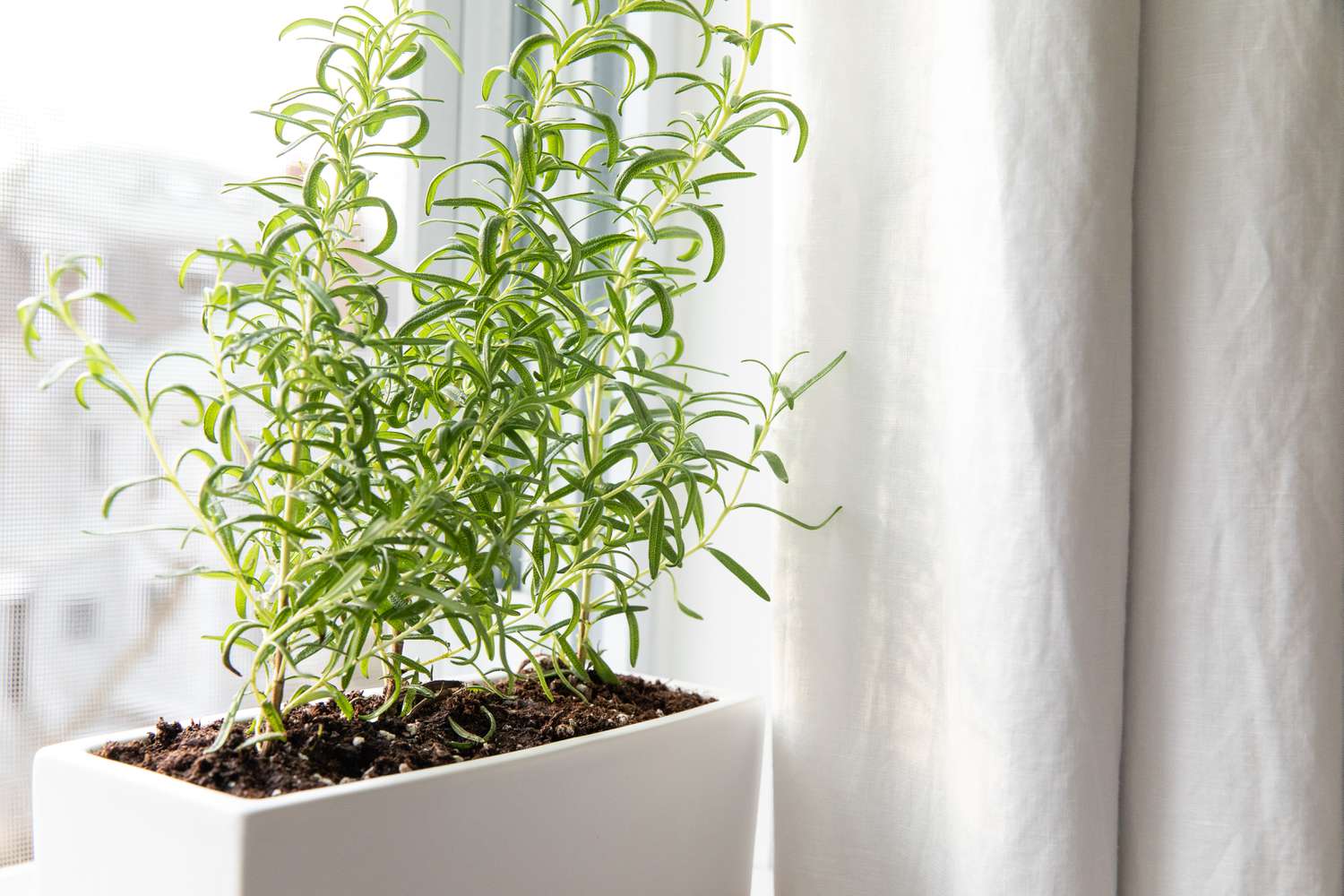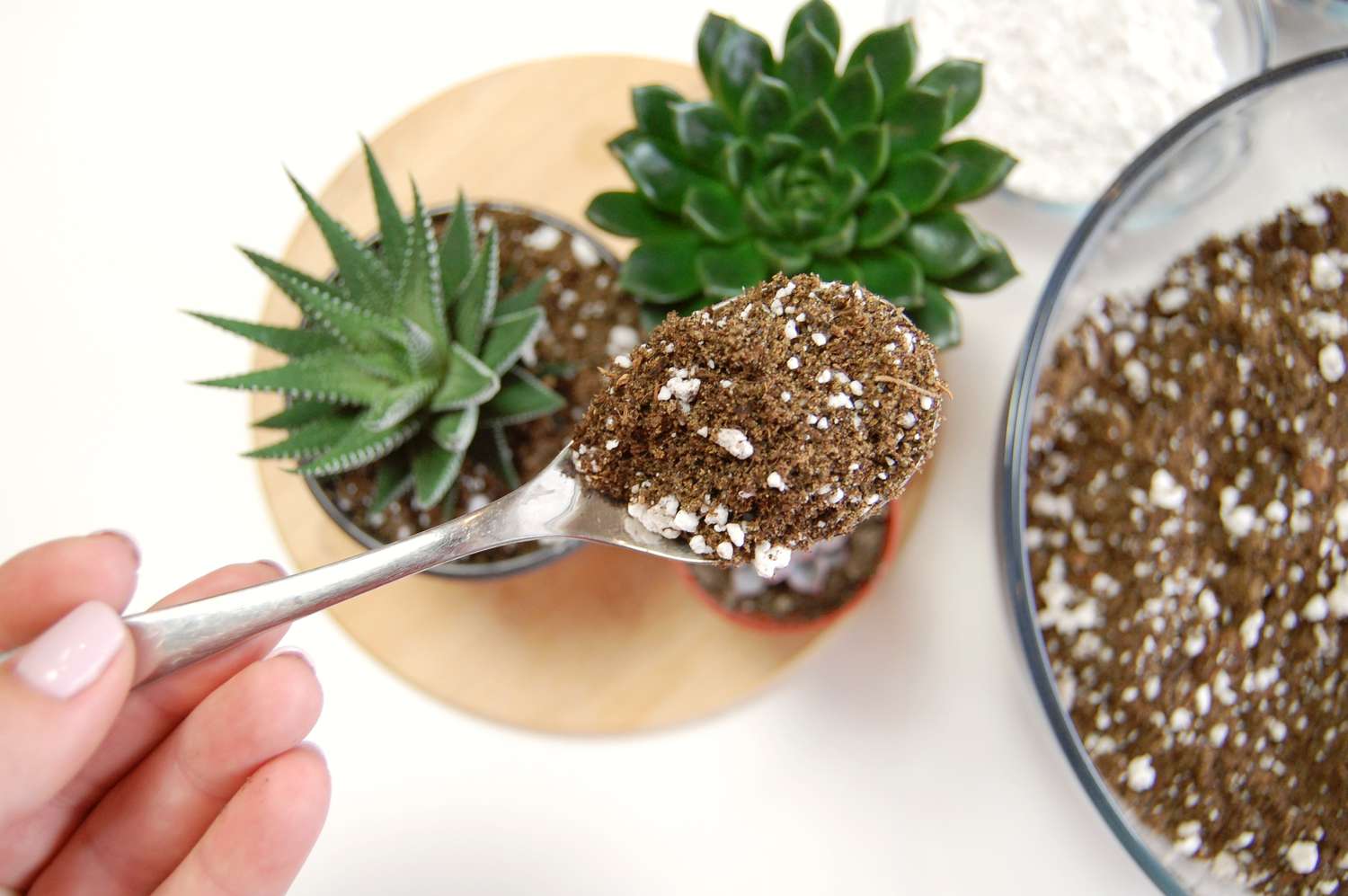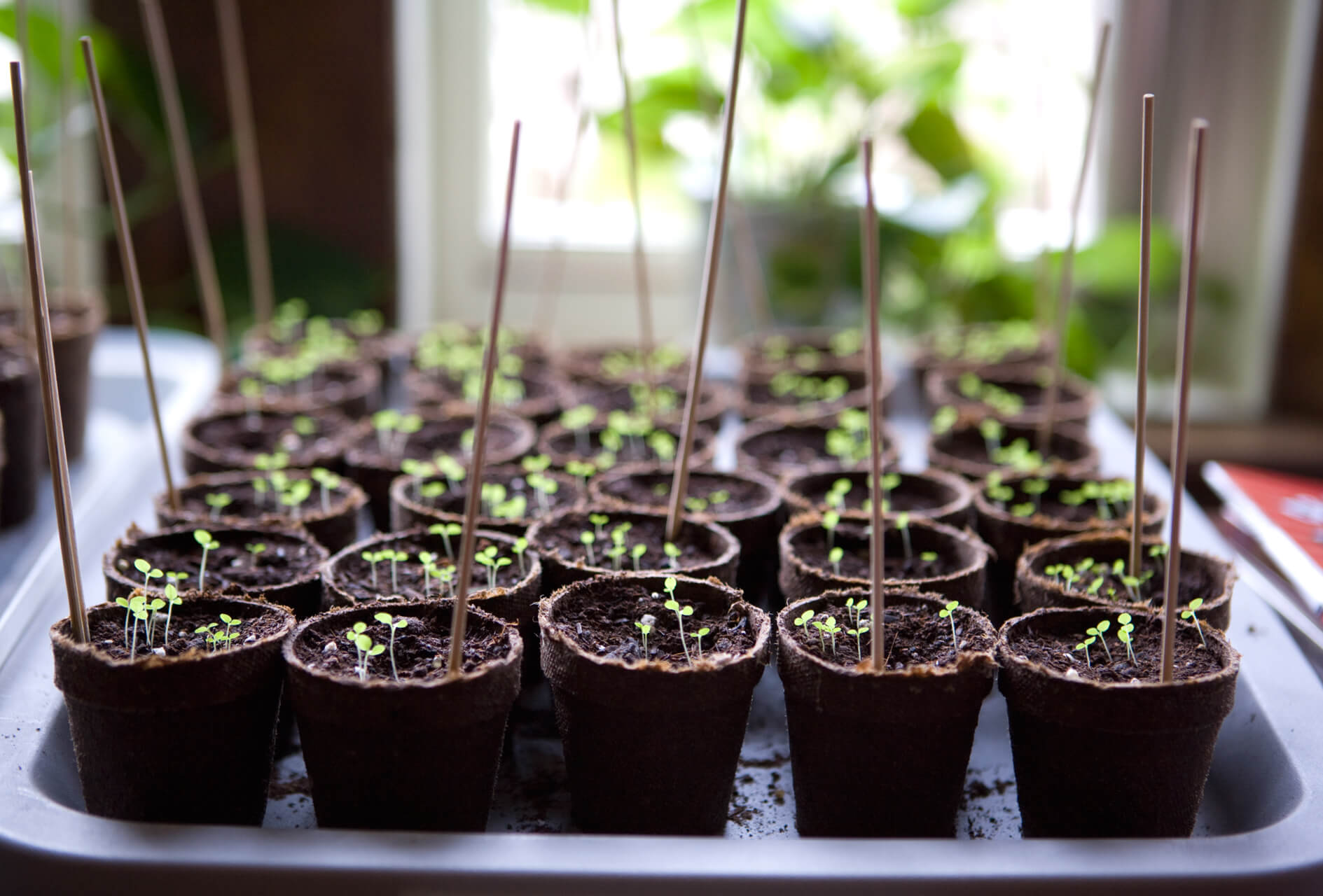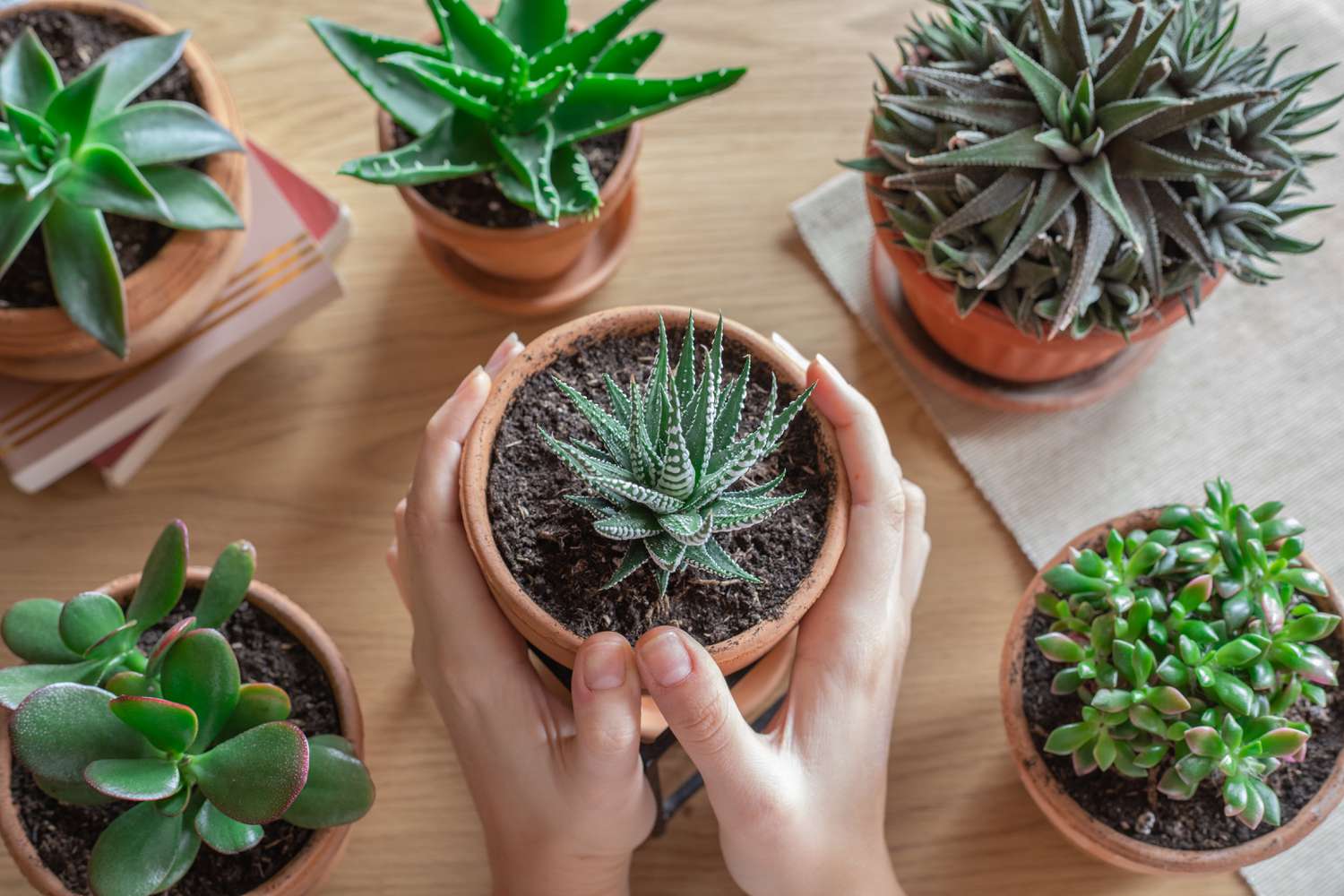Home>Gardening Techniques>Plant Care>How Do I Care For Succulents Indoors
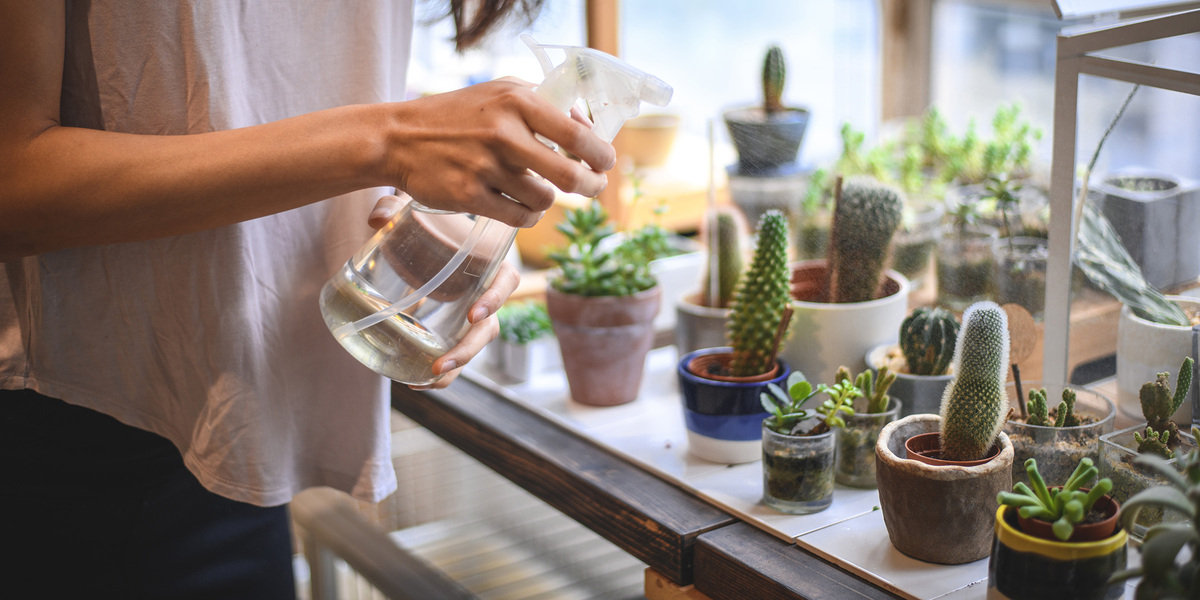

Plant Care
How Do I Care For Succulents Indoors
Modified: January 22, 2024
Learn how to care for succulents indoors with our comprehensive guide. From choosing the right soil to providing the perfect amount of sunlight, we've got you covered. Plant care made easy!
(Many of the links in this article redirect to a specific reviewed product. Your purchase of these products through affiliate links helps to generate commission for Chicagolandgardening.com, at no extra cost. Learn more)
Table of Contents
Introduction
Succulents have gained popularity in recent years as indoor plants due to their unique shapes and vibrant colors. Not only are they visually appealing, but they are also relatively easy to care for, making them an excellent choice for both beginners and experienced plant enthusiasts. Whether you are a busy professional or someone with a green thumb, succulents can bring a touch of nature and tranquility to any indoor space.
These fascinating plants belong to the succulent family, which includes a wide variety of species such as cacti and aloe. Succulents are known for their ability to store water in their leaves, stems, or roots, enabling them to survive in arid conditions. This distinct characteristic allows them to thrive in low-water environments, making them ideal for indoor settings with controlled humidity levels.
When caring for succulents indoors, there are several key factors to consider. From choosing the right succulent to providing adequate light and maintaining the proper soil and drainage, attention to detail is crucial in ensuring the health and longevity of your plants. In this article, we will guide you through the essential steps of succulent care, giving you the knowledge and confidence to create a thriving indoor succulent garden.
Choosing the Right Succulent
When it comes to selecting the perfect succulent for your indoor space, there are a few key factors to consider. Different succulent varieties have different care requirements, so it’s essential to choose one that aligns with your lifestyle and the conditions in your home.
First, consider the size of the space where you plan to keep your succulent. If you have limited space, opt for smaller varieties like Echeveria or Haworthia, which have compact growth habits. On the other hand, if you have more room to spare, larger succulents like Jade Plants or Aloe Vera can make a striking statement.
Another important consideration is the amount of light your indoor space receives. Some succulents, like the popular Snake Plant or ZZ Plant, are more tolerant of low light conditions and can thrive in shady areas. Conversely, succulents such as Euphorbia or Sedum require bright, indirect light to maintain their vibrant colors and compact growth.
Next, think about your ability to provide regular care and attention. Some succulents are more forgiving and can tolerate periods of neglect, making them suitable for those who may have a busier lifestyle or are new to plant care. Examples include the forgiving Pothos or the hardy Haworthia. Alternatively, if you enjoy tending to your plants and have the time to devote to their care, more demanding succulents like the delicate String of Pearls or the intricate Air Plants can provide a rewarding challenge.
Finally, consider the overall aesthetic you want to achieve in your indoor space. Succulents come in a wide array of shapes, colors, and textures, allowing you to create a unique and visually stunning display. From the spiky leaves of the Agave to the rosette formations of the Sempervivum, there is a succulent to suit every style and preference.
By taking these factors into account, you can select the right succulent that not only complements your indoor space but also matches your lifestyle and care abilities. Remember, each succulent has its own requirements, so be sure to research and familiarize yourself with the specific needs of the succulent you choose.
Selecting the Right Pot
Choosing the right pot for your succulent is an important step in ensuring its health and wellbeing. The right pot will not only provide adequate space for your succulent to grow but also support proper drainage, which is crucial for preventing root rot. Here are some factors to consider when selecting a pot for your succulent.
Size: The size of the pot should be proportionate to the size of your succulent. Avoid pots that are too small, as they can restrict root growth and potentially cause the plant to become rootbound. On the other hand, avoid pots that are too large, as excess soil can retain moisture, leading to overwatering. Aim for a pot that provides enough room for the succulent to grow without excessive soil volume.
Material: The material of the pot can also impact the health of your succulent. Clay or terracotta pots are popular choices as they are porous and allow for better airflow and water evaporation. This helps prevent moisture buildup and encourages healthy root growth. However, keep in mind that clay pots can become heavy when filled with soil, so consider the weight if you plan to move your succulent frequently. Another option is plastic pots, which are lightweight and retain moisture well. However, they may not provide as much airflow and can increase the risk of overwatering.
Drainage: Proper drainage is crucial for the health of your succulent. Look for pots with drainage holes in the bottom to allow excess water to escape. These holes prevent water from pooling at the bottom of the pot, which can lead to root rot. If you find a pot you love that doesn’t have drainage holes, you can create them yourself using a drill or place a layer of gravel at the bottom to improve drainage.
Appearance: Lastly, consider the aesthetics of the pot. Choose a pot that complements the overall style of your indoor space and enhances the beauty of the succulent. There are a wide variety of pot designs and colors available, ranging from minimalist and modern to ornate and decorative. Don’t be afraid to get creative and choose a pot that adds a touch of personality to your succulent collection.
By selecting the right pot for your succulent, you can provide a suitable environment for its growth and ensure proper drainage. Remember to consider the size, material, drainage, and appearance when choosing a pot, as each factor plays a role in maintaining the health and vitality of your succulent.
Proper Soil and Drainage
The soil and drainage you provide for your succulent are crucial factors in its overall health and wellbeing. Succulents are adapted to thrive in arid conditions, so it’s important to choose the right soil and create proper drainage to mimic their natural habitat. Here’s what you need to know about proper soil and drainage for succulents.
Soil: Succulents require a well-draining soil mix that allows excess water to escape quickly. The ideal soil for succulents should be porous and have good aeration. You can create a suitable soil mix by combining a standard potting mix with a gritty material such as perlite, coarse sand, or pumice. This mixture helps prevent water retention and promotes root development. Avoid using garden soil or compost, as they can retain too much moisture and lead to root rot.
Drainage: Proper drainage is essential for succulents, as they are highly susceptible to root rot caused by overwatering. Ensure that the pot you choose has drainage holes in the bottom to allow excess water to escape. Additionally, consider using a layer of gravel or small rocks at the bottom of the pot to further improve drainage. This will help prevent water from pooling at the bottom and keep the roots from sitting in water for too long.
Watering: It’s important to water your succulent thoroughly but infrequently. Succulents are adapted to survive in dry conditions, so they prefer to dry out between waterings. When watering, soak the soil completely and allow the excess water to drain out from the bottom of the pot. Wait until the soil is completely dry before watering again. Remember, it’s better to underwater than overwater, as succulents are more tolerant of drought than excessive moisture.
Repotting: As your succulent grows, it may need to be repotted into a larger container. Repotting not only provides more room for the roots to grow but also allows you to refresh the soil mix. When repotting, gently remove the succulent from its current pot, loosen the roots, and place it in a slightly larger pot with fresh well-draining soil. Be careful not to damage the roots during this process.
By providing your succulent with the proper soil mix and ensuring adequate drainage, you create an environment that mimics their natural habitat, allowing them to thrive and stay healthy. Remember to water your succulents sparingly and pay attention to their watering needs based on the moisture level of the soil. Proper soil and drainage contribute to the overall success of your succulent care routine.
Watering Succulents
Proper watering is crucial for the health and growth of your succulents. Succulents have unique water storage capabilities in their leaves, stems, or roots, which allow them to survive in arid conditions. However, it’s important to strike the right balance and avoid overwatering, as succulents are more susceptible to root rot caused by excess moisture. Here are some guidelines for watering your succulents.
Watering Frequency: Succulents prefer to dry out between waterings, so it’s important to avoid overwatering. As a general rule, water your succulents thoroughly but infrequently. Wait until the soil is completely dry before watering again. This can vary depending on factors such as the size of the pot, the type of succulent, and the environmental conditions. As a starting point, water your succulents every 1-2 weeks and adjust based on the moisture level of the soil and the needs of the individual plant.
Watering Method: When watering your succulents, use the “soak and dry” method. This means thoroughly saturating the soil until excess water drains out from the bottom of the pot. Allow the soil to dry completely before the next watering. Avoid misting or lightly spraying the leaves, as this can lead to moisture buildup and increase the risk of fungal diseases.
Observation and Adjustments: It’s important to pay attention to the signs that your succulents give you. If the leaves start to appear wilted or shriveled, it may be a sign that they need water. On the other hand, if the leaves start to become mushy or discolored, it may indicate overwatering. Adjust your watering routine accordingly based on the visual cues and the moisture level of the soil.
Seasonal Changes: Succulents have different water requirements during different seasons. In the summer months when temperatures are higher and evaporation rates increase, succulents may require more frequent watering. In contrast, during the winter months when succulents enter dormancy, they require less water as their growth slows down. Adjust your watering schedule to account for these seasonal changes.
Water Quality: The quality of water you use to irrigate your succulents can also impact their health. Succulents are more sensitive to minerals and salts found in tap water, which can build up in the soil over time. If possible, use filtered water or allow tap water to sit out overnight to allow the chlorine to dissipate before watering your succulents.
By following these watering guidelines and paying attention to the needs of your succulents, you can ensure their healthy growth and prevent issues associated with overwatering. Remember, it’s better to underwater than overwater, as succulents are more tolerant of drought than excess moisture.
Providing Adequate Light
Proper light exposure is essential for the health and growth of your succulents. Succulents are native to sunny, arid regions, and they thrive in bright light conditions. Adequate light not only helps succulents maintain their vibrant colors and compact growth but also supports their photosynthesis process. Here are some guidelines for providing your succulents with the right amount of light.
Sunlight Requirements: Succulents generally prefer bright, indirect sunlight. Place your succulents near a south or east-facing window where they can receive several hours of sunlight each day. If you notice that your succulents are stretching or leaning towards the light source, it may indicate that they are not getting enough light and need to be moved to a brighter location.
Avoid Direct Sunlight: While succulents need sunlight, it’s important to protect them from intense, direct sunlight, especially during the hottest part of the day. Direct sunlight can cause sunburn and damage to the leaves of succulents, resulting in discoloration or even death. If you have limited natural light or live in a climate with intense sunlight, you can use sheer curtains or window blinds to filter the light and create a diffused lighting environment.
Supplemental Lighting: If you don’t have access to sufficient natural light or live in a location with limited sunlight, you can supplement the light with artificial grow lights. There are various types of grow lights available, including fluorescent, LED, and full-spectrum lights. Position the grow lights a few inches above the succulents and adjust the duration of light exposure according to the specific needs of your plants.
Monitor Light Levels: It’s essential to monitor the light levels your succulents are receiving regularly. Keep in mind that the intensity of sunlight can vary throughout the year due to seasonal changes, so be prepared to adjust the placement of your succulents accordingly. Insufficient light can lead to elongated, weak growth, while excessive light can cause leaf burn or color change.
Rotate the Plants: To ensure even growth and prevent leaning towards the light source, rotate your succulents every few weeks. This allows all sides of the plant to receive adequate light exposure and promotes symmetrical growth.
By providing your succulents with adequate light, you can promote their healthy growth and vibrant appearance. Finding the right balance between bright, indirect light and protection from intense sunlight is key to creating an optimal light environment for your succulents.
Controlling Temperature and Humidity
Controlling the temperature and humidity levels in your indoor environment is crucial for the health and wellbeing of your succulents. While succulents are known for their ability to tolerate dry conditions, they still require some level of temperature and humidity control to thrive. Here are some tips for ensuring the right conditions for your succulents.
Temperature: Most succulents prefer moderate to warm temperatures, typically ranging between 60°F (15°C) and 80°F (27°C). However, different species have specific temperature preferences, so it’s important to research the optimal temperature range for your specific succulent. Avoid placing your succulents near drafts or air conditioning vents, as sudden temperature fluctuations can stress the plants. If you live in an area with extreme temperatures, consider providing some protection from the elements or bringing your succulents indoors during temperature extremes.
Humidity: Succulents are adapted to low-humidity environments, so excessively humid conditions can pose a challenge for their growth. Aim for a humidity level between 30% and 50%. If you live in a humid climate, ensure proper airflow and ventilation around your succulents to prevent the buildup of excess moisture. You can also use a dehumidifier or fans to control humidity levels indoors. Conversely, if you are in a dry climate, you can increase humidity by placing trays of water near your succulents to create localized moisture. Misting is not recommended as it can lead to excess moisture on the leaves, increasing the risk of fungal diseases.
Temperature and Humidity Variations: Succulents can benefit from experiencing slight temperature and humidity variations, as this can stimulate their natural growth patterns. Mimicking their natural habitat helps promote overall plant health. For example, if you have outdoor succulents, consider bringing them inside during the cooler months to provide them with a dormant period. This can contribute to their overall vitality and encourage blooming.
Monitoring and Adjusting: Regularly monitor the temperature and humidity levels in the area where your succulents are located. Use a thermometer to check the temperature and a hygrometer to measure humidity. Based on the readings, make any necessary adjustments to create an environment that closely matches the specific needs of your succulents.
Seasonal Changes: Keep in mind that temperature and humidity requirements may vary depending on the season. Succulents may require less water and can tolerate slightly lower temperatures during the winter months when they go through dormancy. Adjust your watering and temperature control accordingly to ensure the best care for your succulents year-round.
By maintaining the right temperature and humidity levels, you provide a favorable environment for your succulents to thrive. Monitoring and adjusting these factors based on the needs of your specific succulent species will contribute to their overall health and longevity.
Fertilizing Succulents
Fertilizing your succulents is an important aspect of their care routine, as it provides them with essential nutrients to support their growth and overall health. While succulents are known for their ability to survive in nutrient-poor environments, they can benefit from occasional fertilization. Here are some guidelines for fertilizing your succulents.
Frequency: Succulents generally have low fertilizer requirements compared to other houseplants. Fertilize your succulents sparingly, typically during the growing season, which is spring and summer. This regular fertilization helps support their active growth phase and replenishes the nutrients in the soil. During the dormant phase in winter, succulents typically require less or no fertilizer.
Strength: Dilute the fertilizer to half or quarter strength to avoid overfeeding your succulents. Too much fertilizer can lead to excessive growth, weak stems, and even damage to the roots. Follow the instructions on the fertilizer packaging and adjust the strength as needed for your specific succulent species.
Type of Fertilizer: A balanced, water-soluble fertilizer is suitable for most succulents. Look for a fertilizer with equal ratios of nitrogen (N), phosphorus (P), and potassium (K), such as a 10-10-10 or 14-14-14 formulation. Alternatively, you can choose a specialized succulent fertilizer specifically formulated for the unique needs of these plants. These fertilizers often contain lower nitrogen levels to prevent excessive leaf growth.
Application Method: Apply the diluted fertilizer to the base of the succulent near the soil, avoiding direct contact with the leaves. Water the plant thoroughly after applying the fertilizer to ensure the nutrients reach the roots. Be cautious not to overwater, as this can lead to root rot. It’s better to underwater than to over-fertilize your succulents.
Organic Options: If you prefer an organic approach, you can use organic fertilizers such as compost or worm castings. These natural fertilizers slowly release nutrients into the soil, providing a gentle and long-lasting source of nutrition for your succulents.
Observation and Adjustments: Pay attention to how your succulents respond to the fertilizer. If you notice signs of overfertilization, such as leaf discoloration or stunted growth, reduce the frequency or strength of fertilization. On the other hand, if your succulents show signs of nutrient deficiency, such as pale leaves or slow growth, you may need to increase the frequency or strength of fertilization slightly.
Remember, fertilizing is not a substitute for proper watering, light, and soil conditions. It’s important to provide your succulents with the right balance of nutrients, but also maintain a well-draining soil and avoid overwatering. By fertilizing your succulents appropriately, you can enhance their growth and ensure their long-term vitality.
Common Pests and Diseases
While succulents are generally hardy and resistant to pests and diseases, they are not entirely immune. However, with proper care and vigilance, you can prevent and manage common pests and diseases that may affect your succulents. Here are some of the most common issues to watch out for:
1. Mealybugs: Mealybugs are tiny, white, cotton-like insects that can infest succulents. They suck sap from the plant, causing stunted growth and yellowing leaves. To treat a mealybug infestation, you can manually remove the bugs with a cotton swab dipped in rubbing alcohol or use insecticidal soap specifically formulated for succulents.
2. Scale Insects: Scale insects appear as small, flat, oval-shaped bumps on the leaves or stems of succulents. They also feed on plant sap and can cause yellowing and wilting. Like mealybugs, they can be treated with rubbing alcohol or insecticidal soap.
3. Fungus Gnats: Fungus gnats are tiny, dark-colored flies that are attracted to excessively moist soil. They lay their eggs in the soil, and the larvae feed on organic matter. To control fungus gnats, allow the soil to dry out between waterings and consider using sticky traps to catch the adult gnats.
4. Root Rot: Overwatering and poor drainage can lead to root rot, a common issue among succulents. Root rot is caused by fungal pathogens that thrive in wet conditions. To prevent root rot, ensure that your succulents are planted in well-draining soil and that the pots have drainage holes. If root rot occurs, you may need to repot the affected succulent and trim away any affected roots.
5. Leaf Spot: Leaf spot is a fungal infection characterized by dark spots or lesions on the leaves of succulents. It can be caused by overwatering, poor air circulation, or high humidity levels. To prevent leaf spot, avoid getting the leaves wet when watering and maintain proper spacing between plants for good air circulation. If leaf spot occurs, remove and dispose of the affected leaves.
6. Powdery Mildew: Powdery mildew appears as a white, powdery coating on the leaves of succulents. It thrives in high humidity conditions and can be spread through contact or air circulation. To control powdery mildew, ensure good air circulation around your plants and treat with a fungicidal spray labeled for succulents.
Regularly inspect your succulents for signs of pests or diseases, especially on the underside of leaves and in the soil. Catching and addressing these issues early on can prevent them from spreading to other plants and help ensure the overall health of your succulents. Additionally, providing proper care, including adequate light, well-draining soil, and appropriate watering, can help strengthen the natural defenses of your succulents against pests and diseases.
Propagating Succulents
One of the fascinating aspects of succulents is their ability to propagate and multiply easily. Propagating succulents allows you to expand your collection, share plants with friends, or simply create new arrangements. There are several methods you can use to propagate succulents, each with its own advantages. Here are some popular propagation techniques:
1. Leaf Propagation: Leaf propagation is a common method for succulents with fleshy leaves, such as Jade Plants or Echeverias. Gently remove a healthy leaf from the parent plant, making sure to keep the base intact. Allow the leaf to dry out for a few days until the cut end calluses over. Then, place the leaf on well-draining soil, mist it occasionally, and wait for new roots to form. Eventually, a small rosette or new plantlet will develop from the cut end of the leaf.
2. Stem or Offshoot Propagation: Many succulents produce offshoots or “pups” from the base of the plant or along the stem. These offshoots can be gently separated from the parent plant and potted in their own containers. Make sure to allow the cut ends to dry out before planting them in well-draining soil. These offshoots will eventually root and grow into independent plants.
3. Division: Some succulents, like Agave or Aloe Vera, can be propagated through division. Carefully remove the parent plant from its container and separate the offsets or clumps of the plant. Make sure each divided section has its own roots and replant them in separate pots with well-draining soil. Water them sparingly until they establish new root systems.
4. Stem Cutting: Succulents with thick, fleshy stems, such as Sedums or Crassulas, can be propagated through stem cuttings. Using a clean, sharp knife, cut a healthy stem section just below a node. Allow the cutting to dry and develop a callus for a few days before planting it in well-draining soil. Keep the soil slightly moist until new roots develop, then gradually reduce watering as the new plant establishes itself.
5. Propagation from Seeds: While propagating succulents from seeds requires more patience and time, it can be a rewarding process. Collect mature seeds from your succulent or purchase them from reliable sources. Sow the seeds in a well-draining soil mix and provide the appropriate humidity and light conditions. It may take several weeks or months for the seeds to germinate and develop into small seedlings, which can then be transplanted into individual pots.
Regardless of the propagation method you choose, it’s important to provide the right conditions for the new plants. Place them in a bright but indirect light location, water sparingly to avoid overwatering, and ensure they have well-draining soil. Remember, not all propagation attempts will be successful, so be patient and enjoy the process of watching your new succulents grow.
Final Thoughts
Caring for succulents can be a rewarding and enjoyable experience. These unique and resilient plants bring beauty and a touch of nature to any indoor space. By following the guidelines and tips provided in this article, you can ensure that your succulents thrive and continue to delight you with their vibrant colors and intricate shapes.
Remember that each succulent is unique and may have specific care requirements, so take the time to research and understand the needs of your specific plant. This will help you provide the optimal conditions for its growth and health.
In addition to proper watering, light exposure, and soil requirements, it’s important to observe and respond to your succulents. Pay attention to their growth patterns, appearance, and any signs of pests or diseases. Adjust your care routine accordingly to promote their well-being.
Don’t be afraid to get creative with your succulent arrangements and displays. Succulents come in a wide variety of shapes, sizes, and colors, allowing you to create visually stunning compositions. Mix and match different succulent species and experiment with different container styles to showcase their natural beauty.
Lastly, don’t forget to enjoy the process of caring for your succulents. Gardening and plant care can be a therapeutic and calming activity, allowing you to connect with nature and find joy in nurturing living organisms. Take the time to appreciate the unique qualities of each succulent and the tranquility they bring to your indoor space.
By providing proper care, attention, and love, your succulents will reward you with their resilience, beauty, and ability to transform any living space into a peaceful oasis. So go ahead, start or expand your succulent collection, and embark on a journey of plant care and admiration. Happy succulent gardening!
